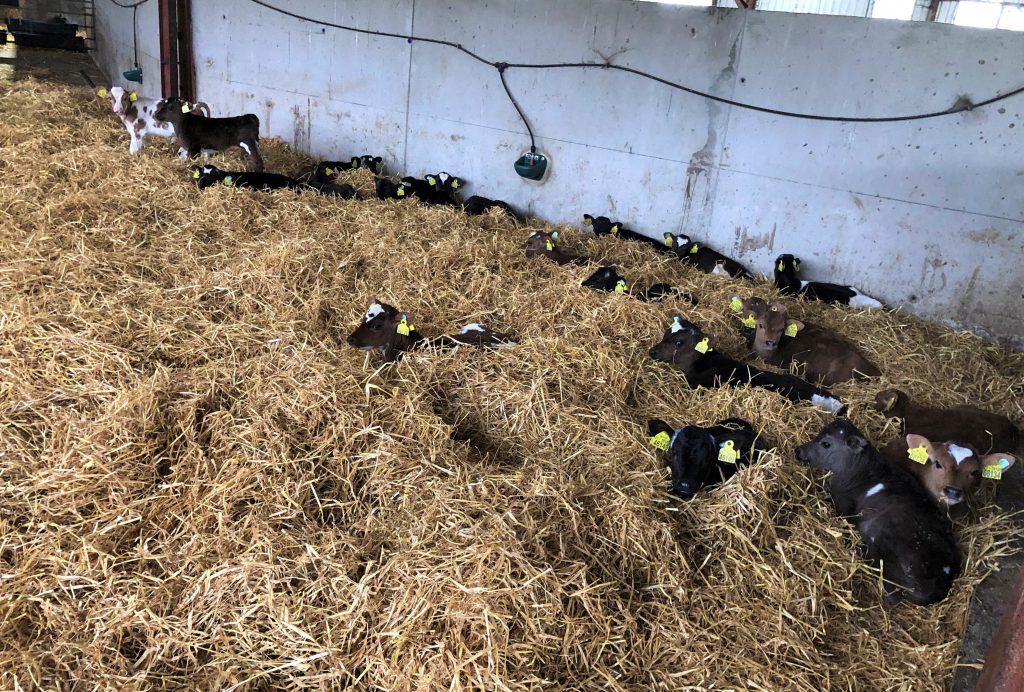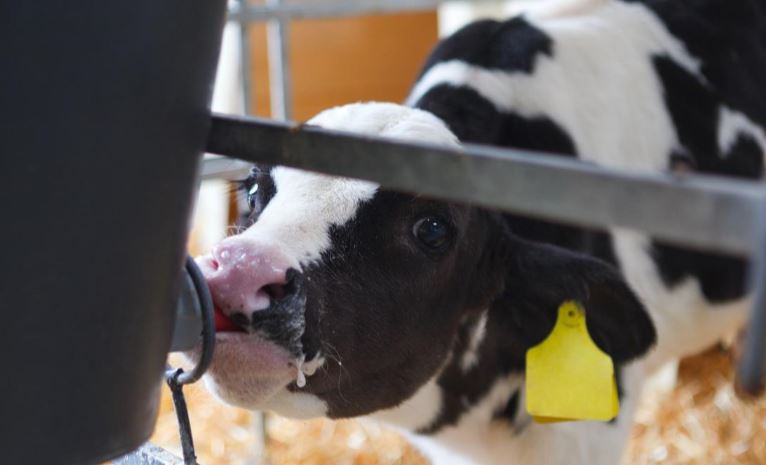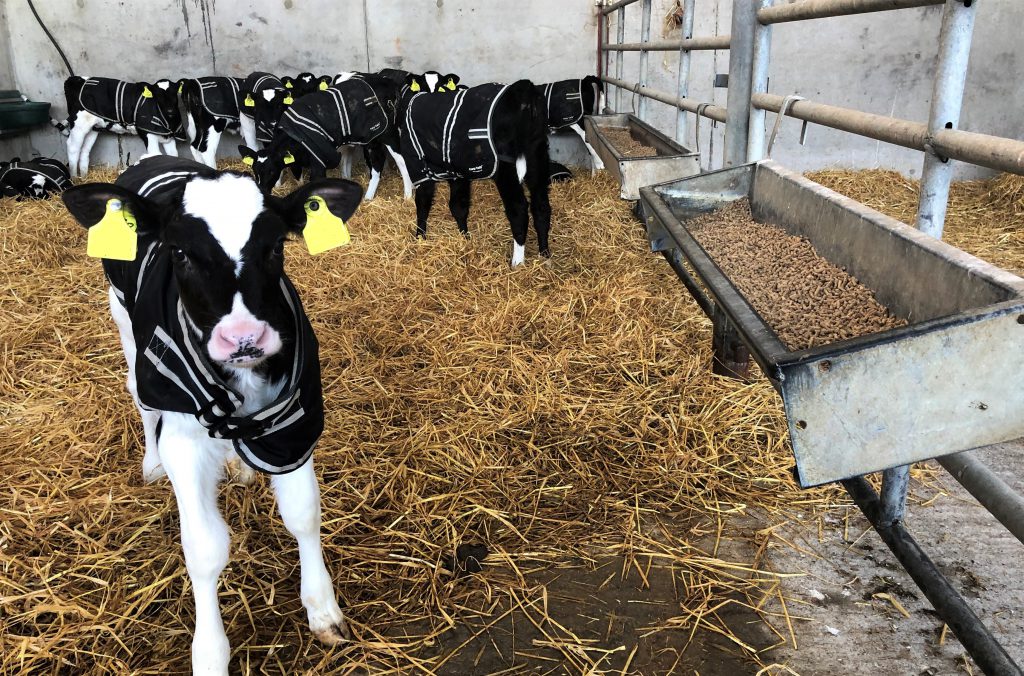In our fourth part of the ‘Calf Health Series’, which is brought to you by AgriLand and Volac, we take a look at calf housing and why adequate conditions are crucial in terms of calf health and overall animal performance.
When it comes to calf rearing there are a lot of factors to consider in order to maximise performance and avoid stress and health issues. Providing the correct housing conditions and environment is just one of these key factors.
If housing conditions are suitable, it reduces the potential threat of respiratory diseases and scours.
What are suitable conditions for housing?
First of all, pens need to be cleaned out and thoroughly disinfected prior to the calves’ arrival into the pens.
Ideally, this should be completed three-to-four weeks before calves are placed into these pens in order to allow them to effectively dry out and allow reservoirs of bacteria to die.
The environment should be free from draughts but have sufficient ventilation at the same time. Farmers need to avoid having under-draughts at calf level, as optimum calf conditions occur at temperatures of 10-20ºC – with humidity at 65-75%.
You also need to remember that when you are cleaning out these pens, they must be easy to access, have durable and easy to clean material – while also having plenty of storage for feed, bedding and water supplies.
Getting ventilation right in housing
If sufficient ventilation is provided in housing, the battle against respiratory diseases can be reduced to a certain degree.
If farmers are considering designs for a calf shed, they should ensure to keep ventilation a priority – it should be a stand-alone building, located upwind of other cattle housing facilities and at right angles to the prevailing wind.
A shed that is well ventilated will have constant flow of fresh air, which will remove moisture generated by the animals and will also avoid draughts. On still days, the heat produced by calves will warm the air.
The warm air rises and leaves the building via an adequately-wide outlet ridge, if it’s wide enough, and the stale air is replaced by cooler, fresher air entering above the calf’s height at eaves level.
Having housing that moisture from feed, urine and respiration is able to build up in results in the calves’ coats getting damp. Chills are caused by this loss of insulation and, in worst case scenarios, can result in the death of calves.
Damp calves will use more energy to keep warm and have less available for growth, therefore performance will suffer.
This moisture that is not effectively removed, creates very suitable conditions for bacteria and viruses to thrive in due to the humid environment.
A simple detection method of poor ventilation is the detecting of smells such as ammonia in the calf house. Good ventilation should remove these by-products such as ammonia, hydrogen sulphide, carbon dioxide and methane.
It will also remove moisture vapour products, disease organisms, dust and foul air, and replace this with fresh air.
Bedding pens and drainage
Having bedding levels correct in housing is another key factor for a calf’s environment. Farmers should remember that calves will spend 80% of their time lying down.
If you walk into a shed and the calves are standing and huddled into a corner, it will indicate that they are cold from either draughts or wet bedding.
On many farms, the go-to bedding material will be straw. Farmers should ensure that straw bedding is at a depth of at least 15cm and should remain dry at all times.
Calves require up to 20kg/head/week of straw bedding in order to maintain dry conditions on concrete floors. However, if calf slats are used, this quantity can be reduced.
There is the option of using wood shavings and bark – as these too will provide the calves with adequate and dry lying conditions.
When bedding, avoid materials that will cause dust to rise – as this will add to a potential threat of respiratory diseases.
To avoid damp bedding from calves urinating and potentially leaking water troughs, a floor slope of 1:20 is desirable.
Good waste channels should be installed to take excess liquid away, along with being checked and cleaned out regularly.
Providing enough space for calves
Allowing for sufficient space for calves within housing is the next important step during the rearing period.
A group size of 12-15 calves is the ideal number to be dealing with – up to a maximum of 20 calves/group.
In terms of measurements, there should be 1.1m² of space for calves aged four weeks. This should increase to 1.8m² for 12-week-old calves and 7m³ of air capacity/calf is recommended.
On some farms, calves are given access to an outdoor pad with a dry lying area. This is a great addition to a calf’s rearing environment as it will reduce disease risks – due to the calves spending quite an amount of time lying outside.
Managing and feeding calves in cold weather
As we have seen in recent times, cold weather is another challenging factor when it comes to rearing calves.
Similar to if a draught is entering the shed, if a calf is cold within housing their energy allocation is focused on keeping warm rather than on growth. This will also impact their immune system and inturn result in respiratory infections and scours.
Lower Critical Temperature (LCT) is the temperature at which animals begin to require additional energy to maintain their body temperature.
The feeding rate of milk powder needs to be monitored and changed based on the likelihood of cold stress.
For a young calf (0-3 weeks-of-age) weighing 50kg feed an extra 100g milk powder/day for each 10ºC drop in ambient temperature below 20ºC, for them to continue to grow at the same rate as when it’s warm outside.
If the outside temperature is 0°C, feed young calves (0-3 weeks) an extra 200g/day.
If you normally feed 625g/day, you will need to feed calves a total of 625g + 200g = 825g/day of calf milk powder for calves to continue to grow at the same rate as when it’s warm outside.
Calf jackets
Calf jackets are a simple but effective piece of equipment to have on a farm. Especially when weather conditions take a turn for the worst and a temperature drop of below 15°C is experienced.
However, jackets are not a ‘fix all problems’ solution when it comes to cold weather conditions at calf rearing. Good husbandry and management is still necessary throughout this period.
Jackets should be used alongside, the previously mentioned, draught-free environment with good deep and dry bedding. This will help maintain good growth and help the calf stay healthy during this stage of youth.
More information
Volac has been involved in young animal nutrition for the past 40 years and is an innovator in this field.
The company is committed to helping farmers make the most of their calves and has developed a range of specialised milk replacers, which are specifically formulated for modern dairy and beef animals.
For more information, contact a Volac representative today, or visit the Volac website by clicking here









